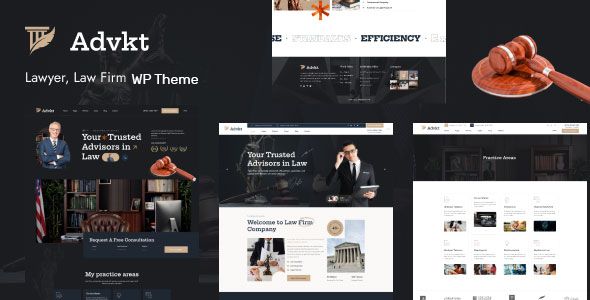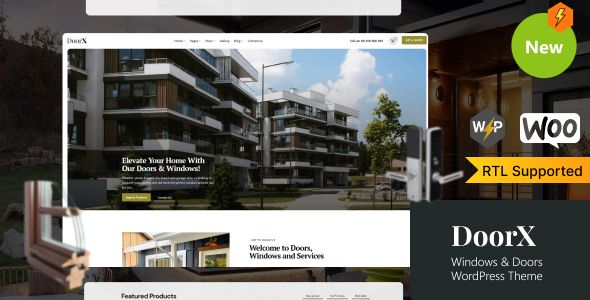Choose Your Desired Option(s)
×
- Description
- Reviews
- FAQ

Artmart – Gallery & Auction WordPress Theme (GPL Edition) — Curated Design, Serious Commerce, Zero License Friction
Running an art gallery website is a juggling act: you’re cataloging works, promoting exhibitions, onboarding consignors, nurturing collectors, and—more and more—running timed or live-style auctions online. None of that should be slowed down by license keys, per-domain limits, or features locked behind paywalls. The GPL edition of Artmart – Gallery & Auction WordPress Theme clears that clutter: install on unlimited sites, pay once, get all Pro features from day one, and keep updates synchronized with the official release. In practice, that means you can stage, clone, and scale gallery sites and campaign microsites at will, run A/B layouts during fair season, and hand projects to staff or agencies without activation hoops.
Below is a hands-on deep dive into Artmart – Gallery & Auction WordPress Theme from the perspective of a working gallery or auction team. You’ll get an opinionated homepage framework, exhibition and catalog structures, auction UX patterns (lots, bidding, reserves, buy-now), artist/series taxonomies, performance and accessibility notes, real-world use cases, and a clear FAQ your staff can actually use. The goal: help you publish a credible, conversion-oriented art site quickly—and keep it fast and organized when inventory rotates and sales windows open.
What Artmart – Gallery & Auction WordPress Theme Is (and Who It’s For)
Artmart – Gallery & Auction WordPress Theme is a modern, exhibition-first design system built around the realities of showing, marketing, and selling art online. It suits:
-
Commercial galleries presenting rotating exhibitions, private-view events, and online viewing rooms.
-
Auctioneers running timed sales, single-owner auctions, benefit auctions, and post-sale “buy now.”
-
Artist collectives with group shows, editions, and print drops.
-
Museums and non-profits hosting exhibitions, catalogs, and fundraising auctions.
-
Advisors and dealers who need polished portfolio pages with inquiry flows and condition/provenance notes.
The theme’s blocks map directly to these tasks: exhibition teasers, artist rosters, artwork/lot grids with deep metadata, viewing-room layouts, timeline/countdown modules for auctions, condition/provenance accordions, consignment intake, and a clear inquiry or bid call-to-action.
Why the GPL Edition Actually Changes Your Week
Licensing friction sounds like paperwork—until it delays a pre-sale. Here’s what the GPL advantages mean day-to-day:
-
Unlimited sites: Stand up a main gallery site, seasonal viewing rooms, special auction microsites, fair-specific landers, and private client rooms without hitting a seat counter.
-
One-time purchase: No surprise renewals when a catalog deadline is tonight. Budget goes to photography, copy, and outreach—not activation codes.
-
All Pro features included: The layouts you saw in the demo are ready immediately; nothing is feature-gated.
-
Updates synced with the official release: Compatibility fixes, styling refinements, and new blocks land on your schedule. Stage, test, and ship—no license server choreography.
-
Frictionless collaboration: Hand the site to a curator, registrar, or outside developer without transferring keys or changing ownership metadata.
The short version: more curating and selling, less tooling overhead.
First Impressions: Museum-Calm, Market-Ready
From first install, Artmart – Gallery & Auction WordPress Theme feels like a well-designed catalog: generous white space, typography that respects captions and wall text, and image-first framing that keeps the art at center.
-
Type & hierarchy: measured headlines; body copy that is genuinely readable on mobile; sensible caption sizes.
-
Grids that behave: masonry and uniform grids for works/lots with consistent gutters; explicit aspect-ratio guards to avoid layout shift.
-
Conversion rhythm: inquiry/bid actions appear where attention peaks—after hero, after first grid row, and near item details.
-
Trust cues: space for provenance summaries, condition notes, and lot terms without overwhelming the image.
It’s visually quiet in the best way: the art does the talking.
From Zero to “Viewing Room Opens Friday” — Setup & Onboarding
-
Install + Child Theme
Activate Artmart – Gallery & Auction WordPress Theme, then immediately switch to the child theme. Keep all custom CSS and small PHP shims there so updates don’t touch them. -
One-Click Demo Import
Choose the base demo closest to your program (exhibition-heavy, auction-heavy, or balanced). The importer creates pages, menus, and sample content so you edit structure rather than rebuild it. -
Global Styles (10 minutes, big payoff)
-
Palette: neutrals (paper, stone, charcoal) plus a single accent for CTAs.
-
Typography: one elegant display for headings, one highly readable text face for body; three weights max.
-
Buttons: clear contrast, modest radius, consistent hover.
-
-
Header & Navigation
Keep navigation tight: Exhibitions, Artists, Shop/Auctions, Viewing Rooms, Journal, Visit/Contact. Place the primary action (e.g., “Register to Bid” or “Join Viewing Room”) on the far right. -
Content Pass
Replace hero image/video, set current exhibition module, seed the artist index, and prepare one auction or viewing room with 8–12 works/lots to start.
In a focused afternoon—if your images and wall text are ready—you can be live with a credible program skeleton.
The Homepage That Converts (and Still Feels Like a Gallery)
A practical structure that Artmart – Gallery & Auction WordPress Theme supports out of the box:
-
Hero
A single arresting image or a calm, autoplay-off clip. One line for the exhibition or sale title; one secondary line for dates. Two CTAs: “Explore Exhibition” and either “Register to Bid” or “Inquire.” -
Current + Upcoming
A two-up or three-up carousel: current show, next show, and a viewing room. Each card carries dates and a succinct curatorial line. -
Featured Works / Lots
6–12 tiles, each with artist, title, date, medium, and a subtle price/bidding state (“Estimate,” “Reserve met,” “Enquire”). Clicking opens a detail page with deep metadata. -
Artists
A tight grid of key artists with hover captions and a link to the full index. -
Auction or Viewing Room Countdown
A clean countdown strip with registration status and terms link, plus a soft “learn how to bid” explainer. -
Journal / Essays
Three recent posts: an interview, installation photos, a critical note. Short teasers keep the grid weight light. -
Visit / Contact
Hours, location, and appointment or inquiry form prompt. -
Final CTA
Repeat the primary action—Explore the sale or Inquire about a work—and stop. No clutter.
This rhythm respects both curation and commerce.
Exhibition Architecture: Curatorial Voice + Sales Readiness
Artmart – Gallery & Auction WordPress Theme handles exhibitions like a real catalog:
-
Exhibition Landing: hero image/video, curatorial essay block, participating artists, selected works grid, and a press section (install shots, factsheet, captions).
-
Artwork Detail: deep metadata (artist, title, date, medium, dimensions, signature/editioning), provenance summary, exhibition history, literature notes, condition, and high-res zoom.
-
Inquiry Flow: a short first-step form (name, email, city, interest) to invite a follow-up with price/availability, framing, and shipping.
-
Viewing Room Mode: time-boxed landing with access gating if needed (soft RSVP), limited palette, and uncluttered captions. Great for fairs, VIP previews, or self-contained online shows.
You can standardize on one detail template so every work reads consistently across the catalog and the sale.
Auction Architecture: Lots, Rules, and Reader Trust
Auctions rise and fall on clarity. The theme’s auction-oriented blocks keep things legible:
-
Sale Landing: title, dates, a clear explainer of sale type (timed, live-style, single-owner), registration status, terms summary, and a featured lots grid.
-
Lot Grid: consistent thumbnails with lot numbers, artist, title, estimate, current bid, and bidding state badges (reserve met, absentee bid placed, ended).
-
Lot Detail: hero image with zoom; essentials (lot number, artist, title, date, medium, size); estimate; bidding increments table; time remaining; reserve status; condition, provenance, and notes; shipping & pickup info; and a disciplined bid/increment control or inquiry CTA.
-
Countdown & Notifications: a subtle but persistent countdown on the sale landing and lot pages. A compact “remind me” module for registered users.
Even if you’re starting with simple timed sales and private bidding, the structure scales to more complex events as your program grows.
Cataloging: Metadata That Works Under Deadline
Good cataloging is half the battle. The theme’s content model prioritizes:
-
Taxonomies for artist, series, medium, category, year/decade, and exhibition.
-
Smart filters on grids (artist, category, price band, availability/state).
-
Editioning & signatures fields that display consistently and won’t get lost in body copy.
-
Provenance & condition accordions so scholars and serious buyers find what they need without cluttering the first screen.
Your registrars will thank you when the pace picks up.
Artists: Index, Profiles, and Available Works
An artist’s page should feel like a focused mini-monograph:
-
Portrait or studio image; short bio; selected exhibitions; awards/residencies.
-
Available works grid (or lots, if in sale) with quick inquiry buttons.
-
Publications & press summary with excerpts.
-
Related exhibitions for context and depth.
Because the theme’s design language is cohesive, profiles feel native whether you have two works available or twenty.
Commerce Patterns: Inquiry, Private Rooms, Editions
Not every collector wants to “add to cart,” and not every piece is an auction lot. Artmart – Gallery & Auction WordPress Theme supports multiple flows:
-
“Enquire” for primary or secondary market works with pricing on request.
-
Private rooms for VIP offers and first-look consignments.
-
Editions & prints with a more familiar, minimal checkout if you sell multiples or catalogs.
-
Post-sale Buy Now to move unsold lots at a fixed price with clear deadline messaging.
Each path has a distinct CTA and tone so collectors know where they stand.
Content That Builds Trust: Journal & Guides
Use the journal to do real work, not fluff:
-
Artist interviews that put a voice to the objects.
-
Behind-the-scenes installation posts that humanize the gallery.
-
Collector guides: condition basics, framing choices, shipping realities, how timed auctions work.
-
Fair reports: photos, highlights, and thank-yous that double as community archives.
Short paragraphs, good captions, and one CTA at the end (“Inquire about the work” or “Explore the sale”) keep it usable.
Performance: Exhibition-Quality Images, Web-Quality Speed
Great images shouldn’t sabotage the site. With Artmart – Gallery & Auction WordPress Theme, you can pass Core Web Vitals by sticking to the basics:
-
Images: export at actual display sizes; serve modern formats; include width/height to reserve space; lazy-load offscreen media.
-
Fonts: two families, three weights; self-host; preload critical files; set sane fallbacks to avoid flashes and layout shifts.
-
Scripts: avoid stacking multiple sliders or animation libraries; lean on the theme’s native components.
-
Caching/CDN: cache pages broadly; exclude forms, search, and any live-bidding endpoints.
-
CLS guardrails: fixed header height; reserved slots for banners and countdowns; consistent button sizes.
You get museum-grade presentation with commerce-grade performance.
Accessibility & Usability: For Every Collector
-
Contrast: confirm AA contrast on captions and buttons (especially over imagery).
-
Focus states: visible outlines for keyboard users; test menus, modals, and accordions.
-
Motion sensitivity: keep parallax and transitions gentle; respect reduced-motion preferences.
-
Alt text: descriptive titles/mediums; don’t repeat visible captions verbatim.
-
Forms: explicit labels, helpful errors, and generous tap targets on mobile.
Accessible sites feel more professional—and convert better.
Multi-Site & Seasonal Scaling (Where GPL Shines)
The GPL advantages become undeniable at scale:
-
Starter kit: lock your brand tokens (colors, type, spacing) and reusable sections (exhibition hero, lot detail, artist bio, countdown, press kit).
-
Clone for fairs and sales: new microsites with the same structure; swap images, dates, and copy; keep style coherence.
-
Central patterns: condition/provenance accordions, estimate tables, and inquiry blocks reused everywhere.
-
Update once, propagate widely: you’re not re-licensing anything; just test on staging, then deploy.
When you need a VIP viewing room by tomorrow, this flexibility pays for itself.
Tips & Best Practices (Pulled from Real Programs)
-
Caption discipline: artist, title, date, medium, size, edition/signature info in the same order on every page.
-
One hero, one message: don’t stack sliders in the hero; let a single work or install image make the case.
-
Inquiry friction: keep first-step forms short; ask about framing, shipping, tax later.
-
Auction clarity: show estimate, increments, and reserve status upfront. Confusion kills bids.
-
Provenance honesty: keep it factual and chronological; move long narratives into collapsible sections.
-
Photography consistency: same light, same angle, neutral background; it reads as serious and saves time.
-
Mobile curation: test every grid on a 375px screen. Big thumbs, clear labels, no fiddly tap zones.
-
Post-sale hygiene: tag sold works quickly; offer related works or editions to sustain momentum.
Troubleshooting & Common Gotchas
-
Demo import stalls → temporarily increase PHP memory and max execution time; retry; import media in batches if needed.
-
Menu wraps on tablets → shorten labels; trigger the compact menu at a slightly wider breakpoint.
-
Soft images → export at target display sizes; avoid browser upscaling; watch sharpening halos.
-
CLS in hero → set explicit image dimensions or use aspect-ratio wrappers; preload critical fonts.
-
Too many effects → disable excessive fades/parallax; quiet pages feel more expensive.
-
Form emails vanish → authenticate your mail sender; test with multiple inboxes; keep confirmation copy plain.
-
Spacing drift → audit for rogue margins; return to the theme’s spacing tokens; keep gutters consistent across grids.
Update Rhythm & Maintenance
Expect compatibility updates for the latest WordPress/PHP, refinements to grids and detail blocks, and small UX improvements. With the GPL edition of Artmart – Gallery & Auction WordPress Theme, you apply updates on staging, click through the critical paths (exhibition → artwork → inquiry, sale → lot → bid/increment), check any custom CSS in your child theme, then ship during low-traffic windows. No activation resets, no license exchanges.
Why Artmart – Gallery & Auction WordPress Theme Is Easy to Recommend
-
Curation-first visuals that never fight the art.
-
Auction-ready structures that make rules and states legible at a glance.
-
Catalog discipline through consistent metadata and taxonomies.
-
Conversion-minded CTAs for inquiries, bids, registration, and private rooms.
-
GPL freedoms—unlimited sites, one-time cost, full Pro feature set, updates in step with the official line—so you can scale programs, seasons, and special sales without tooling drama.
If your mission is to present work beautifully and sell it confidently, Artmart – Gallery & Auction WordPress Theme gives you a calm, credible base that bends to your program, not the other way around.
FAQ — Straight Answers for Directors, Registrars, and Sales
1) What exactly is included with the GPL edition of Artmart – Gallery & Auction WordPress Theme?
The complete theme with all premium sections, unlimited site usage under GPL terms, and updates that mirror the official release cadence.
2) Can I install it on unlimited domains and staging sites?
Yes. Domains, subdomains, and staging environments are all allowed—no license counter.
3) Do I need a license key to unlock features?
No. All features are available immediately after installation; nothing is gated behind activation prompts.
4) Is there a one-click demo import?
Yes. It builds essential pages (home, exhibitions, artists, auctions, viewing rooms, journal) so you replace assets rather than rebuild structure.
5) Does it handle both exhibitions and auctions?
Yes. You have dedicated blocks for show pages, artist indexes, work detail pages, as well as sale landings, lot grids, lot detail, increments, countdowns, and registration prompts.
6) Can I list editions and prints alongside unique works?
Absolutely—use a minimal, consistent product/edition layout with clean CTAs; keep unique works on inquiry or bidding flows.
7) How are provenance and condition presented?
As disciplined accordions with labels for clarity. Long narratives live inside collapsibles so first screens remain calm.
8) Will it pass Core Web Vitals if we use large images?
Yes—export at display sizes, serve modern formats, reserve image space, host fonts locally, and avoid duplicate script libraries.
9) How do I prevent layout shift around countdowns and banners?
Reserve space for those elements and use fixed header heights; the theme’s structure supports this.
10) Is it accessible?
The design respects contrast, focus states, keyboard navigation, and reduced-motion preferences. Provide descriptive alt text and clear labels.
11) Can I run invite-only viewing rooms?
Yes. Use time-boxed landing pages with gated access if needed; keep the palette and pacing calm.
12) What’s the best way to keep design consistent across seasonal microsites?
Set brand tokens once (colors, type, spacing), save key sections as reusable patterns, and clone from a hardened starter.
13) How do updates work under GPL advantages?
Apply updates from the dashboard as they ship; stage first, verify critical paths, then deploy live—no re-licensing steps.
14) Any tips to improve inquiries or bids?
Keep first-step forms short, label estimates and reserves clearly, place CTAs after the first row of works/lots, and repeat a single primary action at the end of long pages.
15) Can I show fair schedules or events?
Yes. Use the events/calendar pattern with dates, location, and a concise blurb; link to viewing rooms or fair highlights as they go live.
Closing Note
A great art site feels like a quietly confident gallery visit—clear sightlines, impeccable captions, and an easy next step. Artmart – Gallery & Auction WordPress Theme delivers that feeling online, with the practical blocks your team needs to catalogue, present, and sell. Paired with the GPL advantages—unlimited sites, one-time buy, fully featured, updates in lockstep with the official release—you can open viewing rooms, launch sales, and scale seasons without pausing to chase a license. Build once, refine with each show, and let the work take the stage.
Q: Do I need a license key?
A: No. All products are Pre-Activated. You can use 100% of the Premium features immediately.
Q: Can I use the One-Click Demo Import?
A: Yes, absolutely! We ensure the demo import feature works perfectly.
Q: Can I use the products on multiple websites?
A: Absolutely. The GPL license allows use on unlimited domains.
Q: Are the files safe?
A: Yes. All files are scanned by McAfee and VirusTotal before uploading.
- Includes all Pro features
- Unlimited sites · GPL-licensed
- Malware-scanned & safe download
Table of Contents
- Artmart – Gallery & Auction WordPress Theme (GPL Ed...
- What Artmart – Gallery & Auction WordPress Theme Is...
- Why the GPL Edition Actually Changes Your Week
- First Impressions: Museum-Calm, Market-Ready
- From Zero to “Viewing Room Opens Friday” — Setup & ...
- The Homepage That Converts (and Still Feels Like a Gall...
- Exhibition Architecture: Curatorial Voice + Sales Readi...
- Auction Architecture: Lots, Rules, and Reader Trust
- Cataloging: Metadata That Works Under Deadline
- Artists: Index, Profiles, and Available Works
- Commerce Patterns: Inquiry, Private Rooms, Editions
- Content That Builds Trust: Journal & Guides
- Performance: Exhibition-Quality Images, Web-Quality Spe...
- Accessibility & Usability: For Every Collector
- Multi-Site & Seasonal Scaling (Where GPL Shines)
- Tips & Best Practices (Pulled from Real Programs)
- Troubleshooting & Common Gotchas
- Update Rhythm & Maintenance
- Why Artmart – Gallery & Auction WordPress Theme Is ...
- FAQ — Straight Answers for Directors, Registrars, and S...
- Closing Note


















